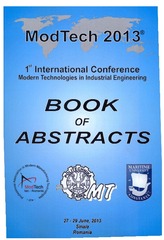Приказ основних података о документу
Directed growth of nanoarchitected hydrid ceramic particles synthesised at low temperature
| dc.contributor | Carausu, Constantin | |
| dc.creator | Rabanal Jiménez, Maria Eugenia | |
| dc.creator | Flores-Carrasco, Gregorio | |
| dc.creator | Gómez, Luz Stella | |
| dc.creator | Barroso, Ignacio | |
| dc.creator | Mančić, Lidija | |
| dc.creator | Milošević, Olivera | |
| dc.date.accessioned | 2017-06-10T15:45:07Z | |
| dc.date.issued | 2013 | |
| dc.identifier.uri | https://dais.sanu.ac.rs/123456789/817 | |
| dc.description.abstract | Nanotechnology is an emerging science involving synthesis and optimization of matter at the nanometer scale. The recent rise in the interest surrounding nanotechnology stems from its potential to revolutionize such fields as engineering and medicine. Nanoparticles, the building blocks of nanotechnology, have been broadly defined as having at least one dimension at 100 nm or less. Engineered nanoparticles are particles synthesized to exploit the size-related properties inherent in the nanoscale (e.g. conductivity, spectral properties, electrochemical properties, ... Spray pyrolysis is a versatile process regarding the powder synthesis of inorganic material. An atomizer (such as ultrasonic) is used to generate a mist from a water or organic solution of inorganic salts or metal organic compounds. The advantages of this method are that the control of particle size, particle size distribution, morphology, crystallite structure and chemical composition are possible. On the order hand, the hydrothermal synthesis is a useful method to prepare nanomaterials with homogeneous crystal structure and morphology, which has some advantages such as simple synthesis process and low energy consumption. In this work, different morphologies of zinc oxide (ZnO), including microrods, microspheres, hexagonal microprism, nanosheets or flower like have been obtained depending on what experimental conditions and synthesis method have been used. Also, hollow and spherical Ag/Y203:Eu (9% at) hybrid nanostructured particles by means of aerosol route from common nitrate solutions at 750°C in Ar atmosphere has been obtained. These as-prepared samples were additionally heated at temperatures up from 800° C to 1200 °C for 12h in argon atmosphere. The microstructures, morphologies and optical and functional properties of the as-prepared and heated samples were investigated by X-Ray diffraction (XRD), scanning electron microscopy (SEM), transmission electron microscopy (TEM), high-resolution transmission electron microscopy (HR-TEM), UV-VIS spectroscopy. The photocatalytic activity of ZnO synthesized by different methods and experimental conditions was evaluated by removal rate of methyleneblue under UV irradiation (365 nm) at room temperature. The results showed that the photocatalytic efficiency of ZnO particles was enhanced by increased precursor concentration. In the case of Ag/Y203 systems, the luminescence results reveal a huge rise in the final luminescence properties as consequence of the "mirror effect" due to the presence of Ag nanoparticles. | en |
| dc.format | (2013) 35-35 | |
| dc.format | application/pdf | |
| dc.language | en | |
| dc.publisher | Iasi : ModTech Professional Association | |
| dc.rights | openAccess | |
| dc.rights.uri | https://creativecommons.org/licenses/by-nc-nd/4.0/ | |
| dc.source | ModTech 2013: 1st International Conference Modern Technologies in Industrial Engineering, 27-29 June 2013, Mara Hotel, Sinaia, Romania: Book of abstract | en |
| dc.subject | nanoparticles | |
| dc.subject | aerosol | |
| dc.subject | hydrothermal processing | |
| dc.subject | zinc (IV)-oxide | |
| dc.subject | yttria | |
| dc.title | Directed growth of nanoarchitected hydrid ceramic particles synthesised at low temperature | en |
| dc.type | conferenceObject | |
| dc.rights.license | BY-NC-ND | |
| dcterms.abstract | Рабанал Јименез, Мариа Еугениа; Гомез, Луз; Флорес, Грегорио; Милошевић, Оливера; Манчић, Лидија; Барросо, Игнацио; | |
| dc.citation.spage | 35 | |
| dc.citation.epage | 35 | |
| dc.type.version | publishedVersion | |
| dc.identifier.fulltext | https://dais.sanu.ac.rs/bitstream/id/21773/814.pdf | |
| dc.identifier.rcub | https://hdl.handle.net/21.15107/rcub_dais_817 |

